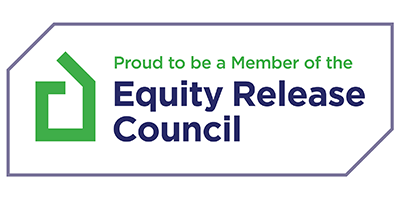In this article
As you approach retirement, your financial situation often changes. You might find yourself wondering, “how much mortgage can I afford in retirement?”.
Now that your income is likely coming from pensions, savings, and investments rather than a regular salary, understanding what’s affordable is key to ensuring that you can enjoy your retirement without financial stress.
Retirement Mortgage Affordability
Explained in 2 min 33 seconds
Find more videos like this on MoneymanTV
Assessing Your Retirement Income
The first step in figuring out how much mortgage you can afford in retirement is to take a close look at your income. In retirement, your income might come from a variety of sources, including:
State Pension
This is the regular payment you receive from the government, based on your National Insurance contributions.
It provides a basic income but might not be enough on its own to cover a mortgage.
Workplace or Private Pensions
Many retirees have additional income from workplace or private pension schemes.
These can provide a significant boost to your retirement income, helping to cover mortgage payments.
Savings and Investments
If you’ve built up savings, have investments or a buy to let property, these can be used to supplement your pension income.
Interest, rent, dividends, and withdrawals from these sources can add to your monthly budget.
Part-Time Work or Side Income
Some retirees choose to continue working part-time or pursue side projects to maintain a steady income.
This additional income can help with mortgage payments and influence how much mortgage you can afford in retirement.
Speak to an Advisor – It’s Free!
Schedule a free callback from one of our experts today.
- All situations considered
- Transparent and honest mortgage advice
- We search 1000s of purchase and remortgage deals
Our customers rate us 4.9/5
Understanding Your Expenses
Once you have a clear picture of your income, it’s important to understand your expenses. Retirement can bring changes in spending patterns.
Some costs, like commuting or work-related expenses, might decrease, but others, like healthcare, travel, or helping family members, could increase. Be sure to account for:
Living Expenses
Your day-to-day costs, including utilities, groceries, and transportation.
Healthcare Costs
As you age, healthcare needs may increase. It’s wise to budget for medical expenses and insurance.
Leisure and Travel
Many people look forward to spending more time on hobbies, travelling, or enjoying new experiences in retirement.
Make sure to factor these into your budget, as they will impact how much mortgage you can afford in retirement.
Unexpected Expenses
It’s also important to set aside funds for unexpected expenses, like home repairs or emergencies, which can affect how much mortgage you can afford in retirement.
How Mortgage Income is Assessed in Retirement
When applying for a retirement mortgage, lenders assess your ability to repay the loan based on your retirement income rather than a traditional salary.
Here’s how they typically evaluate your financial situation to determine how much mortgage you can afford in retirement:
Income Sources
Lenders will look at all your income sources, including state pensions, workplace or private pensions, savings, investments, and any additional income from part-time work or rental properties.
They’ll assess whether these income streams are stable and sufficient to cover your mortgage payments over the long term.
Don’t worry if you have poor income as with enough equity/deposit, there are mortgage options available to you.
Debt-to-Income Ratio
Your debt-to-income ratio (DTI) is an important factor lenders consider. This ratio compares your monthly debt payments, including the potential mortgage payment, to your gross monthly income.
A lower DTI indicates that you have more disposable income, which can improve your chances of securing a mortgage. Retirees are encouraged to keep their DTI below 40% to ensure they can comfortably manage their mortgage alongside other expenses.
A lower DTI can also increase how much mortgage you can afford in retirement.
Affordability Checks
Lenders perform affordability checks to ensure that you can continue to make mortgage payments without financial strain.
These checks consider your income, expenses, and any other financial commitments. Lenders may also consider how your income could change over time, particularly as you age.
These factors all contribute to determining how much mortgage you can afford in retirement.
The 5 Mortgage Types Available in Retirement
When considering how much mortgage you can afford in retirement, it’s essential to understand the different types of mortgages available.
Each option has its own benefits and considerations, depending on your financial situation and goals.
Standard Repayment Mortgages
A standard repayment mortgage allows you to pay off both the capital and interest over a fixed term, usually up to 25 years.
This type of mortgage is straightforward and ensures that you’ll own your home outright by the end of the term. For retirees, lenders may offer shorter terms, depending on your age and financial situation.
Interest-Only Mortgages
With an interest-only mortgage, you pay only the interest on the loan each month, which keeps your payments lower.
The principal (the amount you originally borrowed) is repaid at the end of the mortgage term, often from the sale of the property or other assets.
This option can be appealing to retirees who want to manage their monthly expenses but have a plan for repaying the principal when the term ends.
Retirement Interest-Only Mortgages (RIOs)
Retirement interest-only mortgages are specifically designed for older borrowers. Like an interest-only mortgage, you pay just the interest each month.
The key difference is that there’s no fixed end date; the loan is repaid when you sell your home, move into long-term care, or pass away. This can provide financial flexibility while allowing you to remain in your home.
Lifetime Mortgages (Equity Release)
Lifetime mortgages are a form of equity release available to homeowners aged 55 and over. They allow you to borrow against the value of your home without having to make monthly repayments.
Instead, the loan, plus any accrued interest, is repaid when you sell your home, move into care, or pass away.
This option is particularly popular among retirees looking to supplement their retirement income, purchase a new home, or fund significant expenses.
Home Reversion Plans
A home reversion plan is another type of equity release where you sell a portion or all of your home to a reversion provider in exchange for a lump sum or regular payments.
You retain the right to live in your home rent-free for the rest of your life, but the provider will take its share of the property’s value when it’s eventually sold.
Deciding on the Right Mortgage Amount
Deciding how much mortgage you can afford in retirement is a personal decision that depends on your unique financial situation. Here are some tips to help you make the right choice:
Stay Within Your Means
It’s important to choose a mortgage that fits within your budget. Overextending yourself could lead to financial strain later, especially if unexpected expenses arise.
The good news is that there are certain kinds of equity release mortgages where payments are not required if unaffordable.
Consider Your Future Needs
Think about how your financial situation might change as you age. Will your income remain steady, or could it decrease?
Plan for the long term to ensure you can continue to afford your mortgage payments.
Factor in Your Goals
Your retirement goals should also play a role in your decision.
Whether you want to travel, spend more time with family, or pursue hobbies, make sure your mortgage doesn’t limit your ability to enjoy your retirement.
Seeking Professional Mortgage Advice
Deciding how much mortgage you can afford in retirement can be complex, and it’s a good idea to seek advice from a mortgage advisor who specialises in mortgages for the over 60s.
A later life mortgage advisor can help you assess your financial situation, explore different options, and find a solution that meets your needs. A tailored approach ensures that you can enjoy your retirement without the burden of unmanageable debt.







